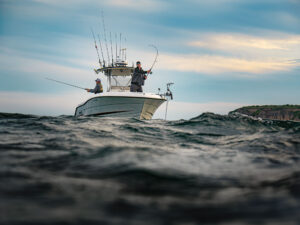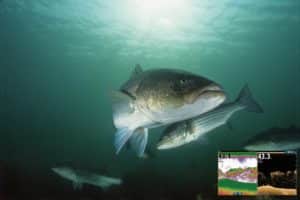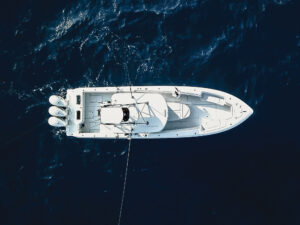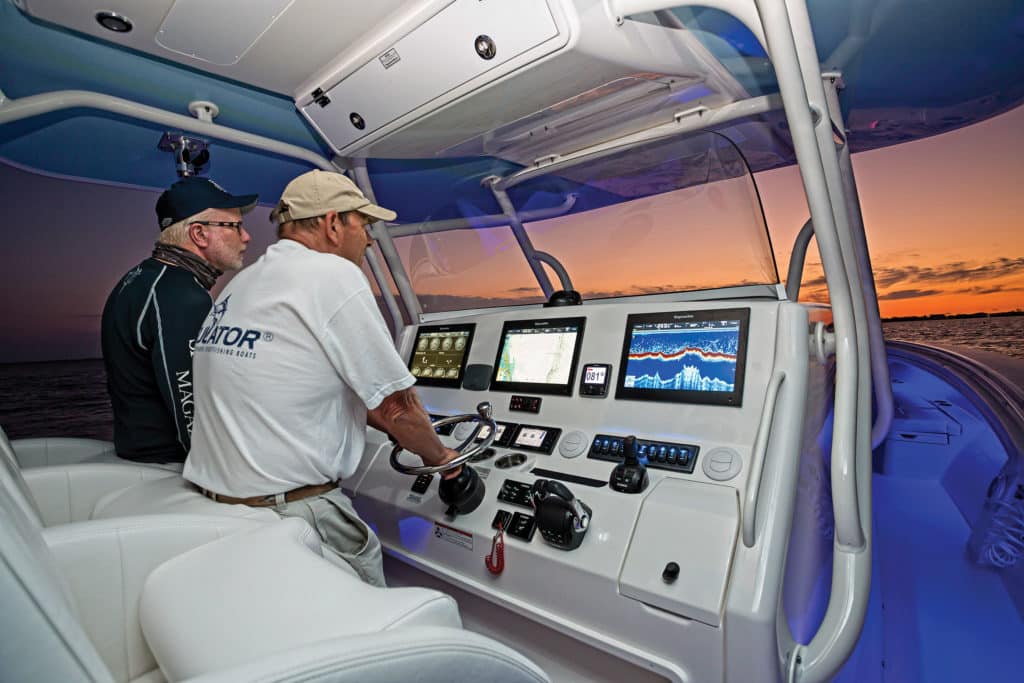
For anglers, the helm area represents one of most valuable spaces on a fishing boat—aside from deck space itself. With the growing number of electronic angling and navigation tools, the helm—or dash, if you prefer—serves as a vessel’s nerve center, home to controls, displays, gauges, chargers, switches and more. Yet all of these items take up space, and eventually room on the dash can run out. The smaller your helm, the more quickly this occurs.
But boating anglers need not despair or do without. With a little creative thinking and utilization of multifunction displays, black-box systems and special mounting devices, you can squeeze in more marine electronics than you ever thought possible, be it aboard a new boat or one you already own.
By using these tricks, in some cases, you may even have room for future expansion. Let’s look at seven ways to squeeze in as much electronic functionality as possible.
Multitasking
If your boat’s helm is equipped with a combo unit with limited networking capabilities, upgrading to MFDs lends more functionality. Touchscreen MFDs allow you to integrate new or additional functions—including scanning sonar, radar, autopilot, sea-surface-temperature readouts, AIS and more—just by using NMEA 2000 plug-and-play cables.
MFDs come in screen sizes ranging from 9 to 24 inches to suit virtually any saltwater fishing boat. Once plugged into the NMEA 2000 network, you are able to control all the integrated functions from the display, negating the need for any additional displays.
Boat-Buying Tip: When buying a new boat, work with the boatbuilder and/or dealer up front so your new boat has all the electronics you want.
Lose the Gauges
Many engines are designed to use MFDs to display vital parameters, including revolutions per minute, cooling-water -pressure, engine temperature, oil pressure, voltage, trim angle and more. MFDs can also provide alerts, including scheduled maintenance and issues such as overheating. Again, this is made possible by an NMEA 2000 connection routed from the motor to a compatible MFD.
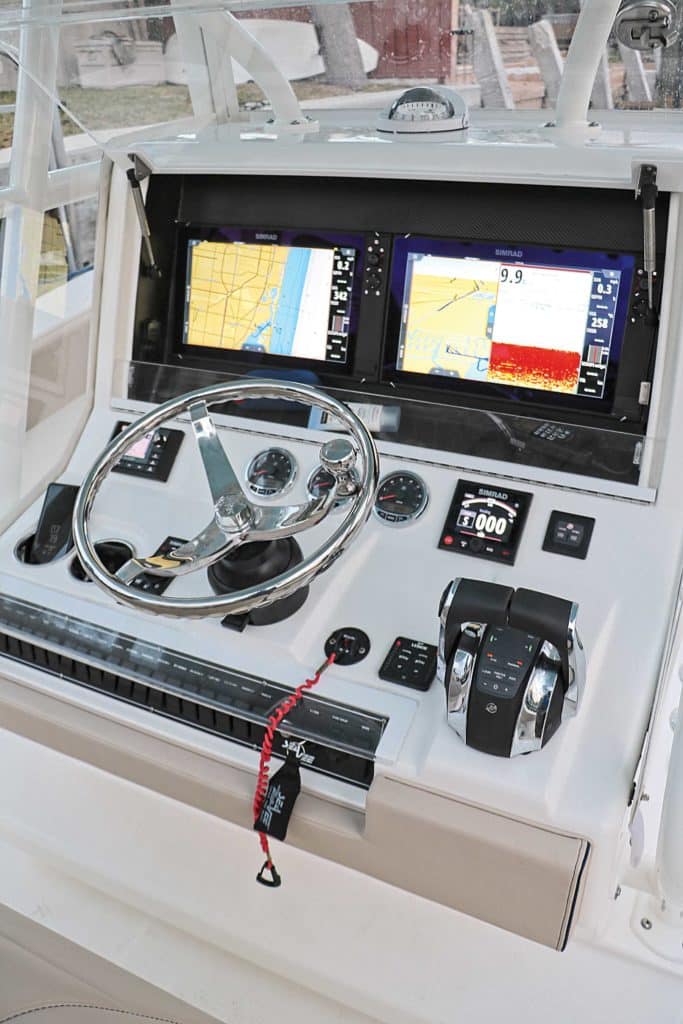
This capability eliminates the need for a conventional space-robbing instrument cluster. No longer do you need a gauge for every specific engine function. Networking the engine consolidates all of that information in one place, freeing up space at the helm.
Switch Out
Switch panels for elements such as lights, pumps and other accessories also occupy valuable helm space. However, digital-switching systems eliminate the need for physical switch panels.
With these systems, most of the switching takes place on a touchscreen MFD. But there is a caveat here: Upgrading to digital switching is a complex retrofit and might not be practical on some older boats. Digital-switching systems are generally reserved for installations on new boats. So, when ordering a new boat from a factory-direct boatbuilder, inquire about the availability of digital switching if you are concerned about limited helm space.
Another space-saver is moving the switch panel from the helm to inside a console or cabin. This works for functions left in the “on” position for extended periods, such as livewell pumps or accessories that don’t require quick access. Switches for bilge pumps and horns should remain at the helm, where they can be immediately accessible.
Overhead Space
If your boat has a T-top, consider adding an overhead electronics box on the underside of the top. Available from a number of companies—including Boat Outfitters, CE Smith, Fishmaster, Taylor Made and Todd—electronics boxes let you relocate VHF radios, stereo head units, and even small bracket-mount displays to free up helm space for other electronics.
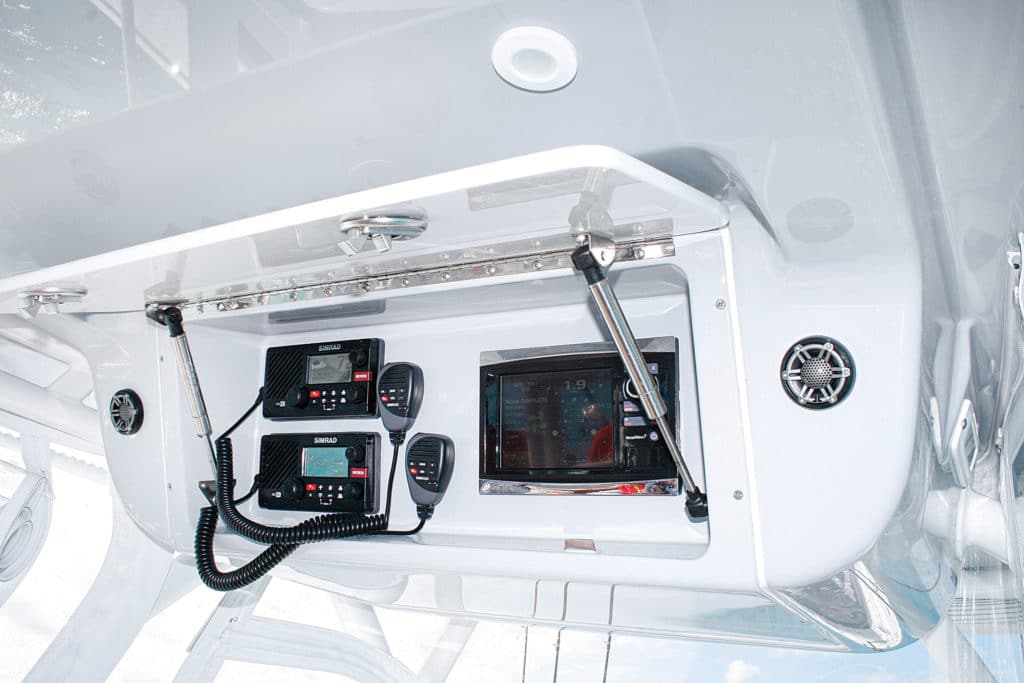
Prices for electronics boxes start at about $340 and are available in a choice of sizes to fit under most tops. Many feature water-resistant, upward-hinging doors. Spring-loaded mechanisms keep the door open, but make sure it can be locked when closed.
DIY installation is easy on most T-tops and hardtops, but if you aren’t confident, ask a qualified service shop to help with the installation.
Boxing Match
Not all electronics need helm displays. For example, the Vesper Cortex V1P VHF (starting at $1,898) relies on a black box installed out of sight, often behind the helm, and wirelessly connected to a handset. The system incorporates a GPS and AIS transponder that connects via NMEA 2000 to other onboard electronics. Vessel monitoring and control capabilities, as well as real-time weather information, are available via a cellular connection to a smartphone.
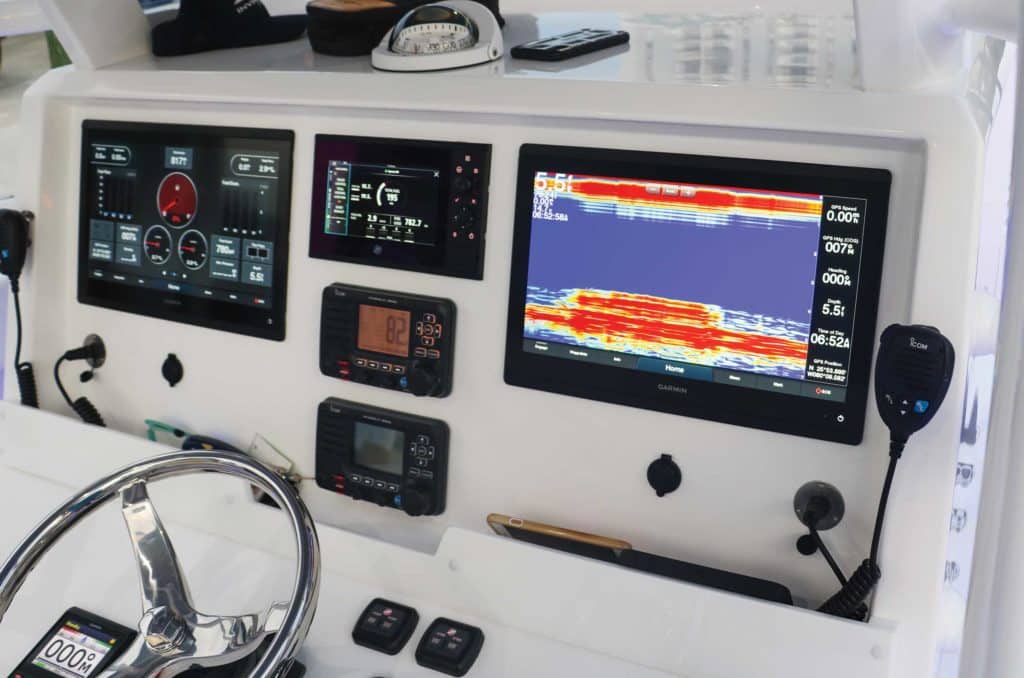
Some audio systems forgo displays as well. An example is the Fusion BB100 Black Box marine stereo ($299.99), which uses a small wired, waterproof remote to control the music. This saves a lot of room on the dash, and you give up very little. What’s more, the Fusion BB100 also lets you use a smartphone to select tunes from your playlist and control other functions, such as the volume of the Bluetooth-enabled system.
On a Pedestal
Most anglers think in terms of bracket- or flush-mounting electronics displays or control systems at the helm. But there are other ways to add marine electronics that require minimal helm space or even no helm space at all.
For example, Ram Mounts offers a pedestal-mounting solution, using a ball-and-socket system for easy viewing-angle adjustments. Ram Mounts’ bolt-on pedestal bases occupy just a 2 ½-inch-diameter footprint. Special plates let you bolt the display bracket atop the pedestal arm, which is available in 3- and 6-inch lengths, with extensions and swivel arms available as well. There are also mounting adapters for mobile devices.
Using one or more of these creative approaches will avail you of all the electronic functionality you need to navigate safely and find fish.
Editor’s Tip: Rail-mounting solutions are available today from brands such as Edson, Ram, Scanstrut, Seaview and West Marine. One of the beefiest of such mounting systems is the Edson ball-shaped clamp-on rail mount ($127). It fits 1-, 1 1⁄8– and 1 1⁄4-inch-diameter rails, and is available with 3- or 5-inch-wide high-density polyethylene mounting bases for attaching a display bracket.
Latest Marine Electronics
Here are three of the newest marine-electronics products for 2022.
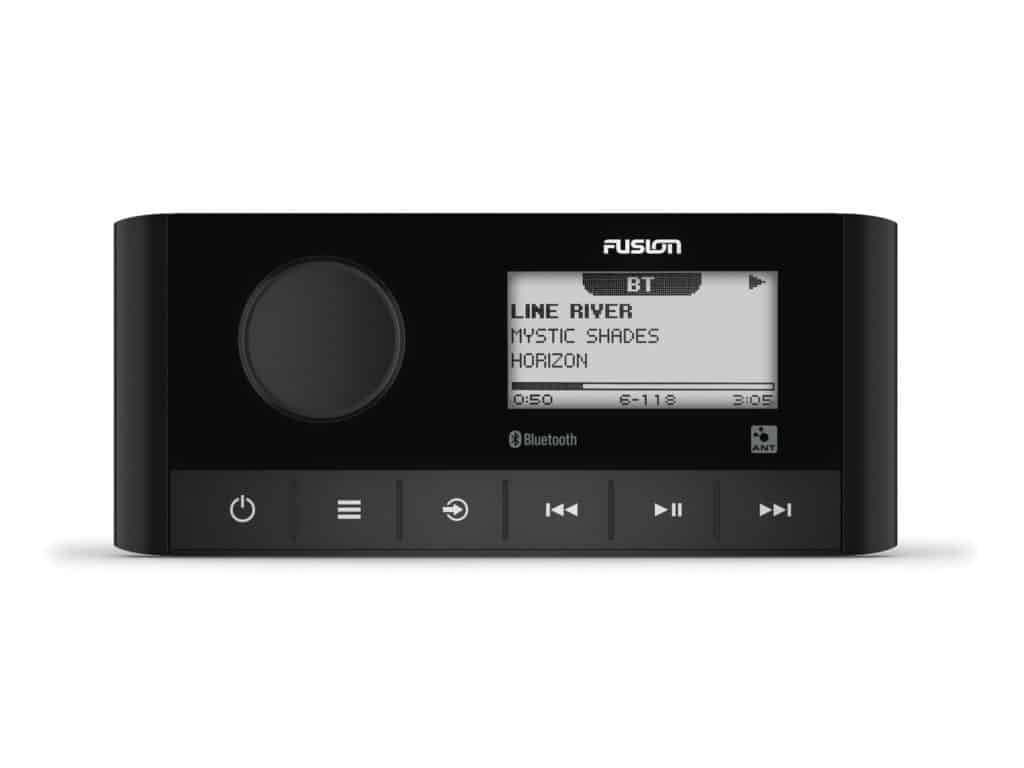
Featuring a compact design with anti-fogging display, the MS-RA60 marine stereo from Fusion Entertainment lets you stream music via Bluetooth with the Fusion-Link app, and allows for wireless control with the ARX70 remote or
ANT-compatible smartwatch. There’s volume control for two audio zones, with Class D amplification to power up to four speakers, and a built-in tuner to access a wide range of radio stations. $1,099.99; fusionentertainment.com
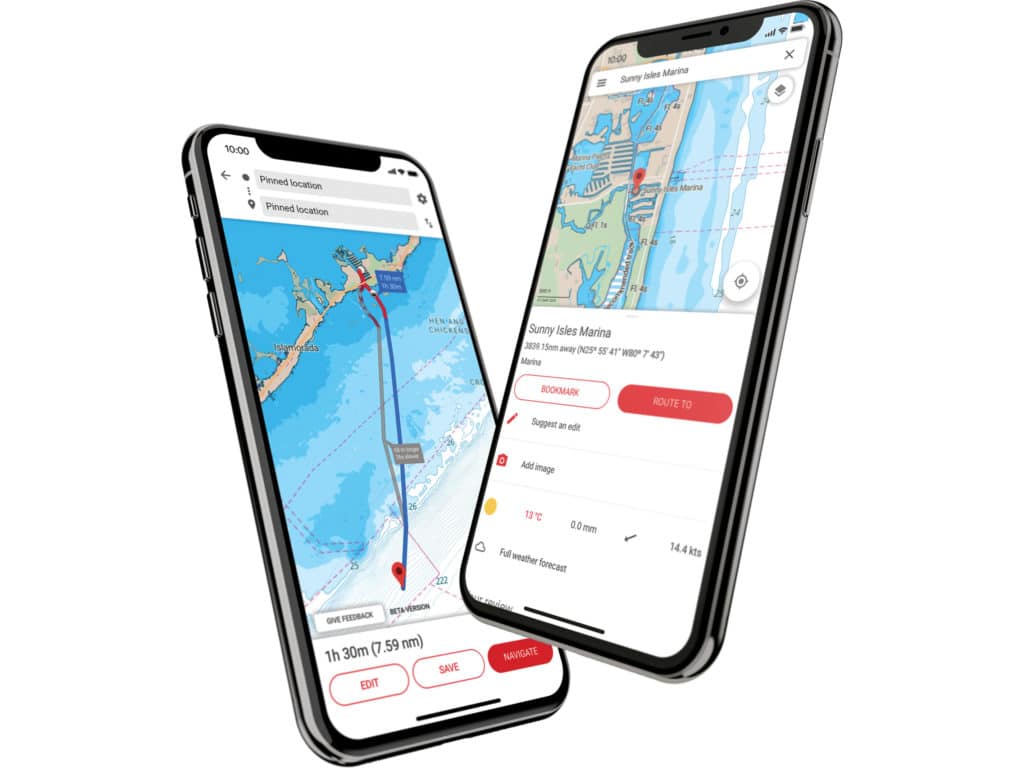
A new app from Simrad’s C-Map charts offers advanced functionality, and mirroring and control of Simrad MFDs from your Android or iOS smartphone or tablet. The app lets you register your Simrad device(s), ensuring you have the latest software, manuals and product tips, plus the ability to sync waypoints and routes. The premium version has additional functions, including stand-alone navigation. Free download; simrad-yachting.com
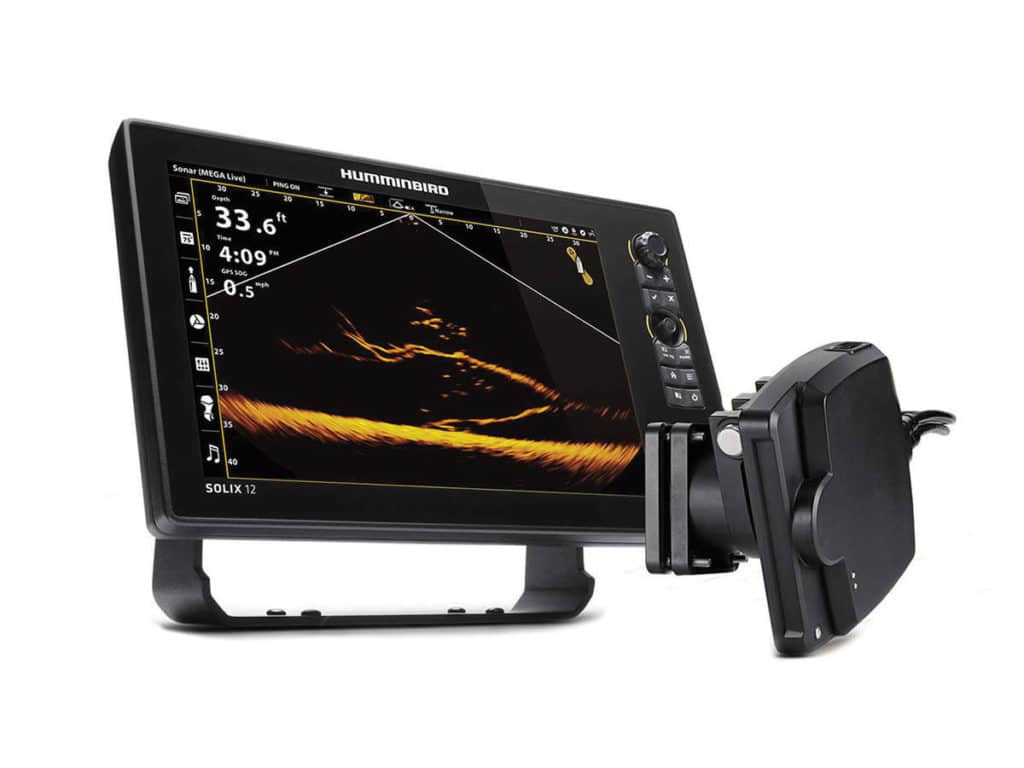
Humminbird’s Mega Live Imaging displays fish onscreen in real time as they move about at ranges as deep as 150 feet. The system employs an optional transducer mounted on the shaft of a trolling motor and connects to a compatible Humminbird multifunction display. Mega Live Imaging won the Best Electronics category at the 2021 ICAST fishing-industry trade show. $1,499 for the transducer package; humminbird.com


